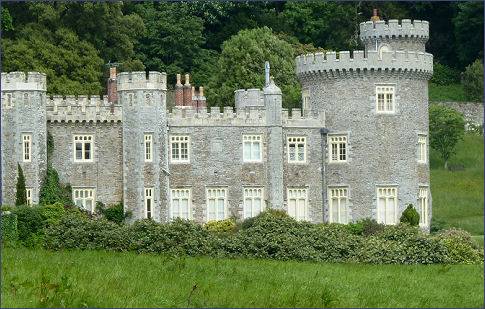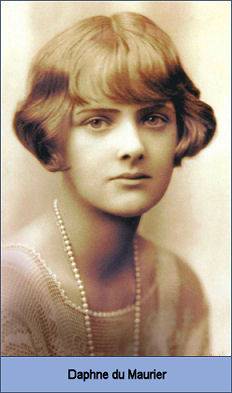Menabilly
OS Grid ref:-
 Historic Menabilly, made famous as the Manderley of Daphne Du Maurier's novel, Rebecca, is situated at Tywardreath on the Gribben peninsula, about 2 miles (3.2 km) west of Fowey.
Historic Menabilly, made famous as the Manderley of Daphne Du Maurier's novel, Rebecca, is situated at Tywardreath on the Gribben peninsula, about 2 miles (3.2 km) west of Fowey.
The influential Rashleigh family of Menabilly began as wealthy merchants in the sixteenth century. Philip Rashleigh (died 1551), a younger son of the Rashleigh family of Barnstaple in Devon, made his fortune through trade. He purchased the manor of Trenant near Fowey from the King Henry VIII in 1545 following the Dissolution of the Monasteries.
His sons, Robert and John, founded the Rashleigh family of Fowey. The land on which Menabilly was built has been owned by the Rashleigh family since the 1560s.
The first house at Menabilly was built by John Rashleigh (1554–1624), shipowner and MP for Fowey in 1589 and 1597. John Rashleigh sailed with the explorers, Frobisher and Drake and captained his own ship 'Francis of Foy' against the Spanish Armada in 1588. The house was completed in 1624 by his son Jonathan Rashleigh (1591–1675), MP for Fowey who fought for the Royalist cause during the Civil War. Jonathan Rashleigh was with King Charles I when Essex and the Parliamentarian army occupied Fowey. When the Roundheads later surrendered, Essex escaped by boat to Plymouth, Jonathan returned to find Menabilly sacked. The house was re-built between 1710 to 1715 by Jonathan Rashleigh III.(1693–1764). Philip Rashleigh III, who inherited Menabilly in 1764, continued the development of the grounds, constructing a grotto near the coast at Polridmouth and, in the late eighteenth century, calling in Thomas Gray to landscape the grounds
 Throughout the centuries, the Rashleighs married into wealthy Cornish families, which strengthened their influence throughout the county. Until 1832 the family was closely linked with the political scene as Fowey had two MPs, many of whom were Rashleighs. Charles Rashleigh, who was born in Menabilly, was a trained lawyer who created the port of Charlestown to aid the exports from the nearby copper mines. Philip Rashleigh was a noted mineralogist.
Throughout the centuries, the Rashleighs married into wealthy Cornish families, which strengthened their influence throughout the county. Until 1832 the family was closely linked with the political scene as Fowey had two MPs, many of whom were Rashleighs. Charles Rashleigh, who was born in Menabilly, was a trained lawyer who created the port of Charlestown to aid the exports from the nearby copper mines. Philip Rashleigh was a noted mineralogist.
The present house consists of two storeys and is built around a central courtyard. Philip Rashleigh (1729–1811) landscaped the gardens and planted the woodland around the house and estate. William Rashleigh, his nephew, succeeded after Philip's death in 1811, and following a fire in 1822 rebuilt the house greatly increasing its size.
During these alterations, his architect noticed that the buttress against the north wall in the courtyard was not supporting anything and instructed the masons to demolish it. Steps were discovered behind it which led to a small cell containing a skeleton, with a trencher at its feet, which, due to the clothing fit was wearing was thought to be that of a Cavalier. The remains were buried in the churchyard at Tywardreath. William Rashleigh carried out some research and learned that members of the Grenville family of Stowe, hidden from the Parliamentarian forces at Menabilly prior to the rising of 1648, during the civil war. The find inspied the 'King's General', Daphne du Maurier's fictionalised account of Menabilly's role in the English Civil War.
In 1943 Menabilly acquired a new tenant Daphne du Maurier the author, The house had been abandoned years before, occupied only occasionally by the owner Dr Rashleigh. Her love of Cornwall was to be an enduring affair, with Daphne setting her three most famous novels here – Jamaica Inn, Frenchman’s Creek and Rebecca, and instilling a sense of place in many of her other books and short stories. Dapne du Maurier set about restoring the house and made it her home before returning it to the Rashleighs in 1969.
Menabilly is still the home of the Rashleigh family.
Historic Buildings in Cornwall